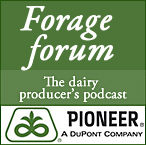 In light of the perilous financial plight affecting America’s dairy farmers, Cooperatives Working Together (CWR) has announced it will conduct its latest herd retirement round. Bids are being accepted starting today through Friday, May 1st.
In light of the perilous financial plight affecting America’s dairy farmers, Cooperatives Working Together (CWR) has announced it will conduct its latest herd retirement round. Bids are being accepted starting today through Friday, May 1st.
Detailed information can be found online, including bid forms, an interactive bid calculator to help estimate a farmer’s bid, and answers to frequently-asked questions. All bids must be postmarked by Friday, May 1st, in order to be considered. All dairy producers submitting bids to sell their herds must be members of CWT effective January 2009, either through their membership in a fully participating cooperative, or as an independent member of CWT. For more information, call 888-Info-CWT (888-463-6298).
“We all recognize that 2009 is shaping up to be among the toughest years on record for dairy farmers, but CWT will help shorten the price plunge farmers are facing, and speed the recovery,” said Jerry Kozak, President and CEO of NMPF, which manages CWT.
This is the seventh herd retirement round since CWT began operations in the summer of 2003.
Kozak said that, given the dramatic downturn in dairy economics in the past six months, CWT is anticipating a large number of bids. However, since the value of cows and heifers has dropped dramatically, the price level of bids accepted will be much lower than in recent years. As has been the case in recent herd retirement rounds, Kozak said CWT has no set target for the volume of milk or the number of cows to be removed in this round.
“Whether CWT will remove a significant number of dairy animals will depend on the number of bids received and the price level of those bids. CWT will not pay more for cows than what they are currently worth in the marketplace.”
As was the case in 2008, in addition to submitting bids for their milk herds, participating farmers will have the option of offering all of their bred heifers, at a flat price of $700 per animal. In addition, there are two program rule changes in this round:
1. Members of CWT whose bids were accepted in a previous round may bid again in this round. This is a one-time exception to the exclusion affecting prior participants in the program;
2. Producers whose bids are accepted in the next and future herd retirements will be paid in two installments: 90% of the amount bid times the producer’s 12 months of milk production when it is verified that that all cows have gone to slaughter, and the remaining 10% plus interest at the end of 12 months following the farm audit, IF both the producer and his dairy facility – whether owned or leased – do not become involved in the commercial production and marketing of milk during that period.

 Congratulations to the student teams from the University of Minnesota, Purdue University, the University of Wisconsin–Madison and The Ohio State University who earned First Place Platinum in the eighth annual
Congratulations to the student teams from the University of Minnesota, Purdue University, the University of Wisconsin–Madison and The Ohio State University who earned First Place Platinum in the eighth annual  Breeding
Breeding 

 Great River Energy, Maple Grove, Minn., is the wholesale power supplier to 28 member distribution cooperatives across Minnesota. The distribution cooperative serving the Morris region, is Agralite Electric Cooperative. Riverview is the managing partner of West River Dairy and Riverview Dairy of MN. When the dairies decided to install anaerobic digesters, largely to convert dairy wastes into more valuable and manageable byproducts, a win-win situation emerged.
Great River Energy, Maple Grove, Minn., is the wholesale power supplier to 28 member distribution cooperatives across Minnesota. The distribution cooperative serving the Morris region, is Agralite Electric Cooperative. Riverview is the managing partner of West River Dairy and Riverview Dairy of MN. When the dairies decided to install anaerobic digesters, largely to convert dairy wastes into more valuable and manageable byproducts, a win-win situation emerged.  Dairy Markets Week in Review
Dairy Markets Week in Review The world’s largest mozzarella producer has retained
The world’s largest mozzarella producer has retained  The
The